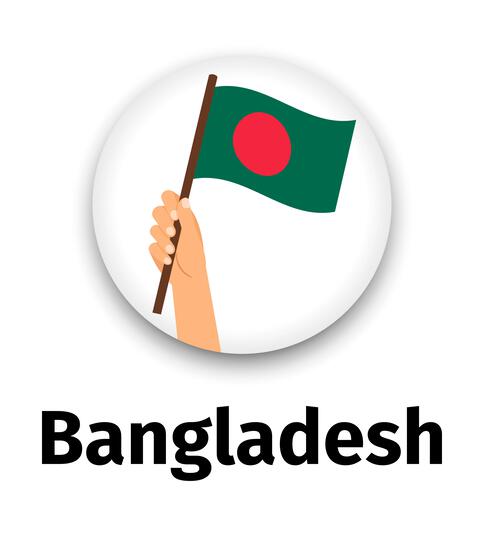One World, One Identity, One Curriculum: Envisioning a Unified Future for Tomorrow’s Children
In an age where digital networks and global interconnectedness have reshaped human interaction, the imperative to foster a shared sense of global citizenship has never been more profound. The vision of a unified world—bound by a singular, inclusive curriculum and a collective identity—transcends mere idealism. It is a clarion call to action, a blueprint for nurturing generations equipped to thrive in a complex, interconnected world. This vision seeks not to erase individuality but to harmonize diverse identities under a shared commitment to humanity, ensuring that the children of tomorrow inherit a world of unity, understanding, and opportunity.
The Urgency of Unity in a Fragmented World
The forces of globalization have drawn nations closer, weaving a tapestry of cultural, economic, and social interdependence. Yet, paradoxically, the rise of nationalism, polarization, and cultural discord threatens to fray this fabric. In this context, education emerges as the most powerful tool to bridge divides and cultivate mutual respect. A unified global curriculum, centered on the principles of global citizenship, can dismantle barriers of prejudice and misunderstanding. By teaching children to appreciate the rich mosaic of cultures, religions, and traditions that define humanity, we empower them to see diversity not as a source of division but as a wellspring of strength. This shared educational framework fosters a sense of belonging to a global community, where differences are celebrated and unity is paramount.
A Common Foundation for Collective Progress
A universal curriculum offers more than a standardized body of knowledge—it provides a shared intellectual and moral foundation that unites children across borders. This curriculum equips them with essential skills: critical thinking to navigate complexity, creativity to innovate solutions, and empathy to forge meaningful connections. By aligning education with universal values—such as justice, equality, and respect for human dignity—we prepare children to collaborate on humanity’s greatest challenges, from climate change and technological disruption to social inequity. This shared foundation instills a sense of purpose, enabling young people to work together toward a future where collective aspirations translate into tangible progress.
Such a curriculum does not seek to homogenize education but to harmonize it, allowing room for local contexts while emphasizing universal principles. It ensures that every child, regardless of where they are born, has access to the knowledge and tools needed to contribute meaningfully to society. This shared educational experience becomes a cornerstone for global cooperation, fostering a generation that sees itself as part of a larger human family.
Crafting a Global Curriculum: A Collaborative Imperative
Realizing this vision demands an unprecedented level of global collaboration. Governments, educators, civil society organizations, and communities must unite to design a curriculum that is:
- Inclusive: Reflecting the diversity of human experiences while anchoring learning in universal values that transcend cultural boundaries.
- Accessible: Ensuring equitable access for all children, regardless of socioeconomic status, geography, or circumstance, through innovative delivery methods such as digital platforms and community-based learning.
- Relevant: Addressing the pressing issues of our time—sustainability, technological ethics, intercultural dialogue—while preparing students for a rapidly evolving future.
- Dynamic: Incorporating experiential learning, such as project-based activities, cross-cultural exchanges, and real-world problem-solving, to foster engagement and practical application.
This curriculum must balance academic rigor with emotional and social development. It should cultivate critical thinking through inquiry-based learning, spark creativity through arts and innovation, and nurture empathy through storytelling and cultural immersion. By integrating these elements, we empower students to not only understand the world but to actively shape it for the better.
A Future Where Every Child Thrives
The ultimate goal of this vision is to create a world where every child can flourish, rooted in their unique heritage yet connected to a global community. A unified curriculum ensures that children grow up with pride in their cultural identities while embracing the diversity of others. It equips them to tackle global challenges collaboratively, from mitigating environmental crises to advancing human rights. This vision imagines a future where borders do not divide but unite, where children are empowered to dream boldly and act compassionately.
By fostering a shared sense of identity, this curriculum instils a profound understanding that humanity’s challenges are interconnected, and so too must be our solutions. It prepares children to be not just citizens of their nations but stewards of the world, capable of building bridges across divides and creating a legacy of hope and progress.
A Call to Collective Action
The path to this unified world begins with a collective commitment to action. Stakeholders at every level—local educators, national policymakers, international organizations, and engaged citizens—must work together to bring this curriculum to life. This requires investment in teacher training, development of inclusive educational materials, and the leveraging of technology to reach underserved communities. It demands dialogue and cooperation across cultures to ensure that the curriculum reflects the aspirations of all humanity.
The time to act is now. By embracing this vision, we lay the foundation for a world where every child is valued, empowered, and equipped to contribute to a brighter future. Let us commit to this bold endeavor, uniting our efforts to create an educational framework that reflects our shared humanity and paves the way for a more just, inclusive, and harmonious world.






.jpg)









No comments:
Post a Comment
Please validate CAPTCHA